À CANNA nous nous nourrissons des histoires des horticulteurs passionnés partout au Canada qui font échos à notre communauté et qui nous inspirent à voir grand.
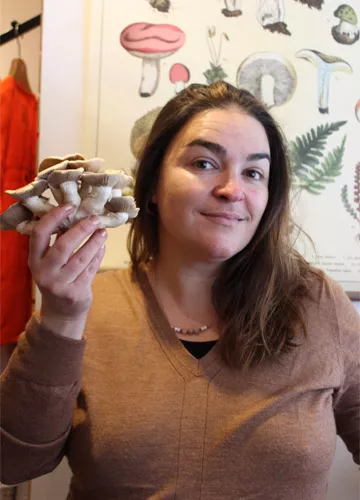
LE PARCOURS
Judith, parlez-nous un peu de vous.
Judith : Je suis co-propriétaire avec mon père de « La Mycoboutique », une entreprise familiale spécialisée dans tout ce qui touche aux champignons.
Fondé en 2006 par mon père, Pierre Noël, le magasin vise à mettre à la portée de tous, à travers le monde, tout ce dont ils ont besoin pour profiter de ce que les champignons peuvent offrir d’un point de vue de l’alimentation, de la santé et des loisirs.
Racontez-nous comment votre intérêt pour les champignons s’est développé.
Judith : Passionnée par la nature depuis toujours, j’ai fait mes études universitaires en biotechnologie. Ce n’est que lorsque mon père a eu l’idée d’ouvrir une boutique de champignons style magasin général que j’ai découvert la myciculture.
Il y a 17 ans, mon père prenait sa retraite après une carrière à titre de gestionnaire de risques pour se lancer dans cette entreprise dont il connaissait peu de choses. Mon père n’a jamais vu les choses comme les autres, il est plutôt unique en son genre [rire]. À l’époque, il cultivait une passion pour les champignons et souhaitait créer un magasin général à l’image de ce que faisaient les colons français dans les petits villages. Le sien allait englober ses thèmes favoris : la nature, la science, la gastronomie et le plein air.
Image de « Mycoboutique », une boutique spécialisée unique en son genre au Canada :
Désireuse de passer plus de temps à ses côtés, j’ai décidé de faire le saut avec lui.
La courbe d’apprentissage fut monumentale pour connaître les produits et assimiler les notions nécessaires à la création de ce qui est aujourd’hui le seul magasin spécialisé de sa catégorie au Canada. Nous avons développé un grand savoir-faire dans le domaine de la vente et de la culture des champignons. Nous disposons aussi d’un laboratoire à même notre boutique où nous produisons nos propres trousses de mycélium maison pour les vendre aux producteurs.
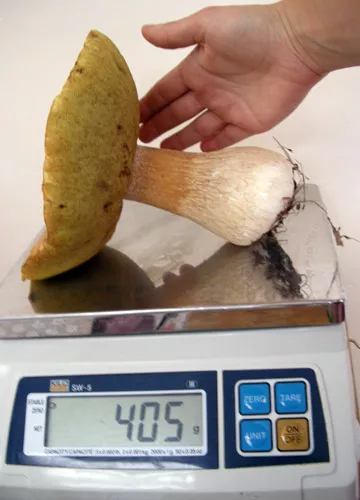
Nous commençons par prélever un petit échantillon des tissus internes du chapeau ou du pied de champignon (le mycélium), pour le cloner et le purifier sur des plateaux de gélose nutritive (agar-agar). De là, nous créons des bouillons de culture qui contiennent les nutriments et des parties du mycélium purifié. Ces bouillons de culture sont placés sur des grains très nutritifs pour s’y répandre. Nous les déposons ensuite sur un substrat de fructification comme CANNA COCO Brick et voilà, le tour est joué!
Les champignons ont besoin de respirer. Ils ont besoin d’oxygène et de nutriments, c’est pourquoi le substrat ne doit pas être trop dense. Nous utilisons aussi des écales de soja et de la sciure de bois dur.
Notre équipe compte maintenant huit personnes et c’est grâce à elles que nous en sommes ici aujourd’hui.
Comment votre passion pour les champignons a-t-elle évolué?
Judith : Au départ, je passais le plus clair de mon temps dans notre labo où nous apprenions par essais-erreurs comment fabriquer nos trousses de culture de champignons pour les clients. Un projet d’envergure. Pour réussir les techniques de culture de champignons, il faut la bonne combinaison d’humidité, de température, de substrat (milieu de culture) et d’inoculum (culture de démarrage).
Aussi, ma curiosité a grandi au fil des ans. Le potentiel des champignons semble infini!
Amoureuse de la nature, j’ai toujours aimé passer du temps en forêt et maintenant j’ai la chance de guider des passionnés de champignons et des esprits curieux au travers des forêts du Québec pour les éduquer sur les champignons, sur la cueillette des espèces sauvages, mais aussi sur la faune et la flore. C’est une sorte de mycotourisme que j’ai le bonheur de faire découvrir aux autres.

Pourquoi les champignons?
Judith : Les champignons possèdent tellement de bienfaits et d’utilités.
- Ils servent d’ingrédient pharmaceutique et en médecine alternative
- Les recherches ont démontré l’effet positif de la psilocybine sur l’anxiété
- Ils peuvent servir à fabriquer des emballages biodégradables
- La collection de chaussures Stan Smith par Adidas les utilise comme matière durable : du cuir fabriqué à partir de champignons
- Ils peuvent être utilisés pour décomposer la matière organique
- Les champignons sont d’excellents substituts à la viande en raison de leur haute teneur en protéines
- Et la liste continue…
« Le potentiel des champignons semble infini! »
Diverses variétés de champignons cultivées et récoltées par Judith Noël. Crédit photo : Mycoboutique.
UNE PASSION
POUR LA CULTURE
Quel est votre élément favori du processus de culture?
Judith : J’adore voir le contenu de mes trousses de mycélium fructifier et prendre vie… les chapeaux de champignons qui prennent soudainement forme… on dirait même qu’ils explosent. De petits points blancs qui se transforment en structures complètes aux goûts et aux couleurs uniques. De petits bijoux pour les myciculteurs.
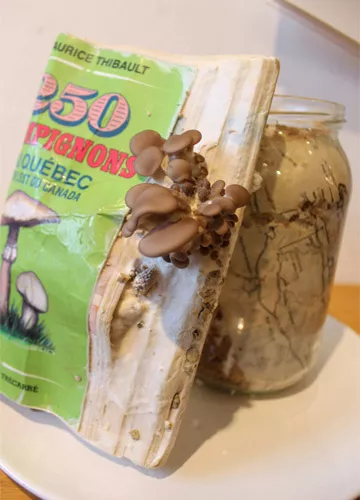
Quelle serait la partie la moins intéressante du processus selon vous?
Judith : La contamination.
Lorsqu’une culture est contaminée, il faut jeter tout le travail à la poubelle. Le processus de production du milieu gélosé avec l’agar-agar jusqu’aux sacs de culture prend environ un mois et demi. S’il y a contamination, il faut se débarrasser de tout.
On distingue facilement une culture propre d’une culture contaminée à la vue et à l’odeur. L’odeur qui émane d’un agar-agar propre est fruitée, sucrée, cuirée même, mais s’il est contaminé, il sent les ordures.
Nous travaillons avec des sacs scellés munis de filtres pour éviter que les petites mouches soient attirées par l’odeur. Mais le réel combat est celui contre les bactéries, les levures et les champignons microscopiques.
« On distingue facilement une culture propre d’une culture contaminée à la vue et à l’odeur. L’odeur qui émane d’un agar-agar propre est fruitée, sucrée, cuirée même, mais s’il est contaminé, il sent les ordures. »
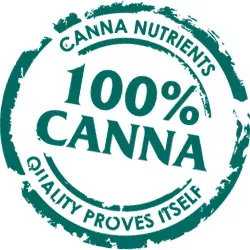
Quelles différences constatez-vous lorsque vous cultivez au moyen de produits propres et de haute qualité, par rapport aux autres produits?
Judith : Certains champignons se nourrissent de cellulose, d’autres de bois. S’ils n’ont pas ce dont ils ont besoin ou si le milieu de culture n’est pas suffisamment riche, les champignons ne pousseront pas.
Quelles caractéristiques recherchez-vous dans un substrat?
Judith : Le substrat doit être stérile, c’est pourquoi nous utilisons CANNA COCO Brick.
- Il ne doit pas être trop dense, car le mycélium ne pourra pas respirer.
- Il doit être riche en carbone.
- Il doit avoir un bon rapport carbone-azote.
- Sa capacité d’absorption d’eau doit être d’au moins 50 % d’humidité. Il ne doit être ni trop absorbant (cela attire les contaminants) ni trop saturé pour permettre la respiration.
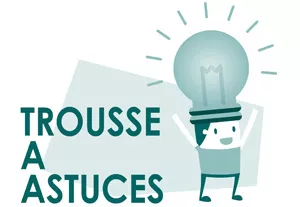
Avez-vous l’impression que les nutriments et les milieux de culture jouent un rôle crucial dans la sécurité, le goût et la qualité générale du produit final?
Judith : Un champignon cultivé sur un substrat contaminé accumule des contaminants. Certains champignons peuvent même accumuler de la radioactivité… Donc oui, la sécurité du substrat utilisé pour cultiver le champignon est un facteur déterminant.
Quel est LE conseil que vous aimeriez donner à quelqu’un qui souhaite commencer à cultiver des champignons à la maison?
Judith : Prenez votre temps. Il n’existe aucun raccourci en myciculture.
À votre avis, quel est le degré de compréhension globale du consommateur moyen par rapport aux champignons qu’il consomme?
Judith : Les gens croient que les champignons poussent dans le fumier, mais ils ignorent que bien d’autres substrats peuvent servir à les cultiver. Ce n’est que récemment que les gens ont commencé à saisir le fonctionnement du processus.
Au cours des 17 dernières années, on m’a souvent demandé si je vendais des champignons hallucinogènes [rire], malheureusement, ils sont encore illégaux… Espérons que la situation changera bientôt.
Donnez-nous quelques exemples de commentaires/sujets/mythes soulevés par les consommateurs que vous souhaitez démentir ou rectifier.
Judith : Trois questions font souvent surface. Permettez-moi de les clarifier ici.
- La mycorhize n’est pas ce qui produit les fruits que nous mangeons ou les fleurs que nous consommons, c’est plutôt la relation de symbiose entre certaines plantes et le mycélium de champignon qui en est responsable. Elle joue un rôle fondamental pour augmenter les systèmes racinaires ainsi que la disponibilité de l’eau et des nutriments.
- Les champignons produisent du CO2 et peuvent être utilisés dans une salle de culture pour augmenter l’apport général en CO2. Mais les bombonnes de CO2 procurent de meilleurs résultats. Certes, le niveau de CO2 augmente puisque les champignons consomment de l’oxygène et respirent le CO2, mais c’est beaucoup plus difficile à contrôler.
- Nous vendons du mycélium pour le potager, il s’agit d’un champignon compagnon. Pour qu’il soit efficace, il faut d’abord semer les tomates, puis ajouter le mycélium et pailler le sol. Les champignons vont coloniser la paille et les tomates pousseront au travers de la paille. Les pleurotes fonctionnent plutôt bien dans ce contexte.
« Un champignon cultivé sur un substrat contaminé accumule des contaminants. »
Dans les années à venir, pour quel aspect aimeriez-vous être reconnue au sein de la communauté de la myciculture?
Judith : J’aimerais beaucoup être reconnue pour les activités écologiques, le mycotourisme et les excursions de cueillette de champignons. Se rendre en forêt pour cueillir des champignons est une excellente façon de protéger la forêt. Lorsqu’on commence à scruter notre environnement, on développe un sentiment de vigilance et une sensibilité. On entre en communion avec la forêt.
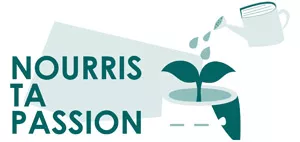
Y a-t-il une personne que vous admirez particulièrement dans l’industrie? Qui, et pour quelles raisons?
Judith :
- Eugenia Bone - auteure américaine
- René Leboeuf - mycologiste
- Paul Stamets
Recommandations de Judith
- Organic Mushroom Farming and Mycoremediation de Tradd Cotter



















